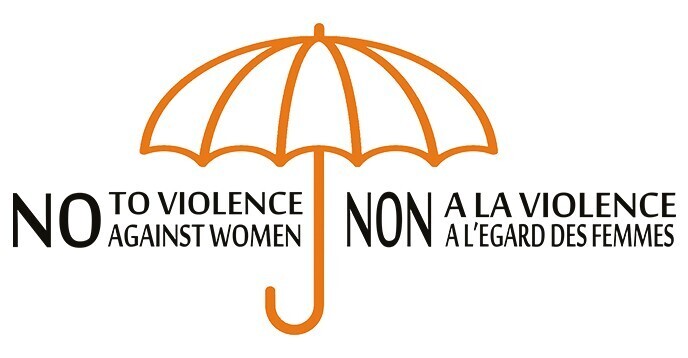
ESCWA: Climate finance to Arab region went mainly to Egypt, Iraq, Morocco
The United Nations Economic and Social Commission for Western Asia (ESCWA) said climate finance to ...

UNESCO will be illuminated in orange on November 25 which marks the International Day for the Elimination of Violence against Women. The 2019 theme is ‘Orange the World: Generation Equality Stands Against Rape .
November 25 has been designed as the Orange Day by the UNiTE to End Violence against Women Campaign. The color orange symbolizes a brighter future, free of violence. It also serves as a means of demonstrating solidarity in eliminating all forms of violence and it is therefore used as the color of the International Day for the Elimination of Violence against Women. As a show of solidarity, the UNESCO globe will be illuminated in orange.
On the occasion of the International Day for the Elimination of Violence against Women, UNESCO has organized an exhibition presenting the scope and depth of violence against women around the world, as well as initiatives that UNESCO undertakes in order to address this phenomenon. The exhibition started on November 23 and will extend throughout the 16 Days of Activism.
Moreover, UNESCO staff will participate in a group picture using umbrellas to say NO to violence against women, which will be used for advocacy and awareness raising. UNESCO Field Offices will also share pictures across all social media.
“Sexual violence against women and girls is rooted in centuries of male domination. Let us not forget that the gender inequalities that fuel rape culture are essentially a question of power imbalances.” UN Secretary-General António Guterres said.
Violence against women and girls (VAWG) is one of the most widespread, persistent and devastating human rights violations in our world today remains largely unreported due to the impunity, silence, stigma and shame surrounding it.
In general terms, it manifests itself in physical, sexual and psychological forms, encompassing intimate partner violence (battering, psychological abuse, marital rape, femicide); sexual violence and harassment (rape, forced sexual acts, unwanted sexual advances, child sexual abuse, forced marriage, street harassment, stalking, cyber- harassment); human trafficking (slavery, sexual exploitation); female genital mutilation; and child marriage.
To further clarify, the Declaration on the Elimination of Violence Against Women issued by the UN General Assembly in 1993, defines violence against women as “any act of gender-based violence that results in, or is likely to result in, physical, sexual or psychological harm or suffering to women, including threats of such acts, coercion or arbitrary deprivation of liberty, whether occurring in public or in private life.”
The adverse psychological, sexual and reproductive health consequences of VAWG affect women at all stages of their life. For example, early-set educational disadvantages not only represent the primary obstacle to universal schooling and the right to education for girls; down the line they are also to blame for restricting access to higher education and even translate into limited opportunities for women in the labor market.
Efforts to prevent and end violence against women at the global, regional and national levels shows that there is widespread impunity on sexual violence and rape.
Violence against women continues to be an obstacle to achieving equality, development, peace as well as to the fulfillment of women and girls’ human rights. All in all, the promise of the Sustainable Development Goals (SDGs) – to leave no one behind – cannot be fulfilled without putting an end to violence against women and girls.
The United Nations Economic and Social Commission for Western Asia (ESCWA) said climate finance to ...
Elizabeth Maruma Mrema, Deputy Executive Director of the United Nations Environment Program (UNEP), said every ...
President Abdel Fattah El Sisi issued eight directives on the Labor Day to ensure providing ...


اترك تعليقا